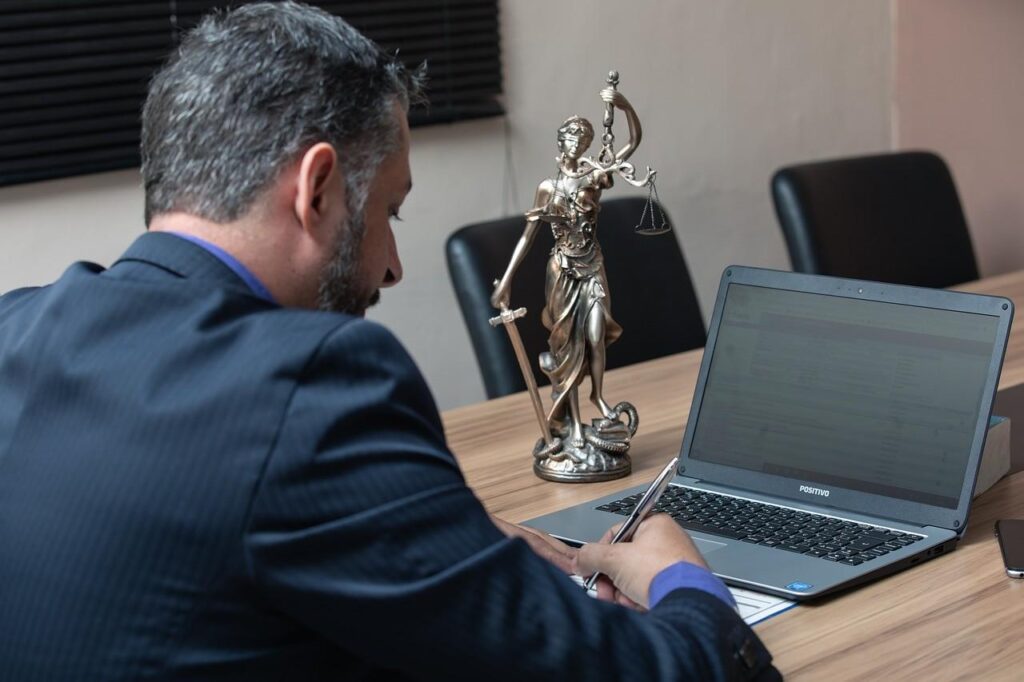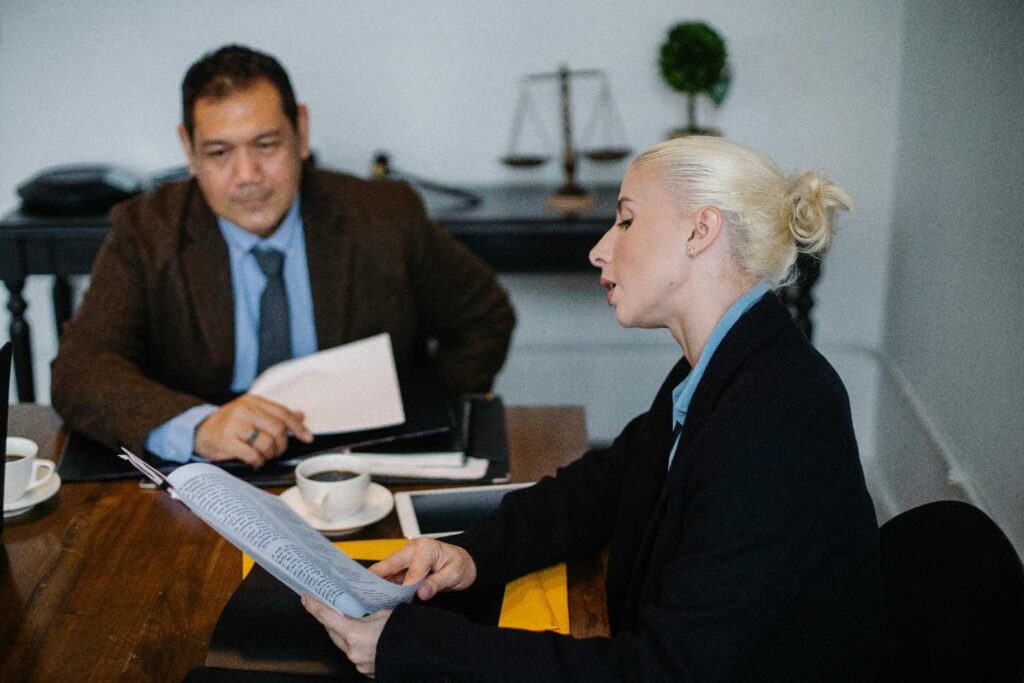If you’ve ever tried to do a prior art search, you know it can feel like looking for a needle in a haystack—except the haystack is on fire, and the needle is hidden in another haystack on the other side of the world.
For years, inventors and startup founders had to spend days, even weeks, digging through massive databases, reading dry technical documents, and hoping they didn’t miss something that could make or break their patent. It was slow. It was expensive. And it was risky.
Now, AI is flipping that script.
Why Prior Art Search Matters More Than You Think
Many founders see prior art search as a step you take only when you are ready to file a patent.
That mindset can be costly. In reality, the right prior art search, done early and strategically, can shape your entire business trajectory.
It’s not just about checking if your idea is new—it’s about uncovering the landscape you are about to compete in.
When you skip this step or rush through it, you risk building a product on shaky ground. You might invest in features that someone else already owns the rights to, forcing you into redesigns or licensing deals later.
Or you might position your product in a market segment that is already crowded with protected technology.
The truth is, prior art search is not just a legal safeguard—it is a market intelligence tool. It tells you where others have staked claims, what trends are emerging, and where there might be untouched territory for you to own.
How to Turn a Search Into a Strategic Advantage
Think of the search results not only as red flags but as a roadmap. Each patent or publication you uncover is a clue to what your competitors are working on or have already built.
By analyzing patterns across these documents, you can see which features are heavily protected and which areas are wide open for innovation.
One practical way to use this insight is by shaping your product roadmap around open white space.
If a certain type of sensor technology is crowded with prior art, you can choose a different approach that avoids the risk of infringement while still meeting user needs.
This kind of strategic pivot early on can save you from expensive course corrections down the road.
Another advantage of this mindset is being able to identify potential partners or acquisition targets. If you find a patent that is relevant but not a direct obstacle, the owner might be open to collaboration.
This could give you faster access to proven technology and help you strengthen your own IP portfolio.
Using Timing to Your Benefit
The timing of your search matters as much as the depth of it. Waiting until your product is nearly finished before checking for prior art means any big discoveries could derail your launch plans.
Instead, running an AI-powered prior art search at multiple stages—from concept development to pre-launch—helps you keep your strategy aligned with reality.
Early searches help you validate your core idea before investing heavily in development. Mid-stage searches can help refine features and ensure you are not drifting into risky territory.
A final search before filing locks in confidence before you make your patent application public.

When you treat prior art search as an ongoing, adaptive process rather than a single task, you build a business that is resilient, informed, and ready to act on opportunities as they appear.
How AI Sees Patterns You Can’t
When humans search for prior art, we rely on language we already know. We type in a few keywords, maybe try different variations, and hope the database returns something relevant.
The problem is, language is slippery. Inventors describe similar ideas in wildly different ways. Entirely different industries might be working on parallel technology without ever using the same vocabulary.
AI removes this limitation by going beyond exact words and tapping into meaning. Instead of simply matching text, it understands concepts, context, and intent.
This means it can draw connections between your invention and something described in completely different terms—connections a human researcher might never think to check.
Seeing the Shape of Innovation
AI-powered search tools can map relationships between thousands of inventions. Imagine your invention as a dot on a map. Traditional search can only see the dots close to yours by exact wording.
AI sees the entire cluster of related dots, even if they’re far away in terms of language but close in function or purpose.
For a business, this means you don’t just find one or two similar patents—you uncover entire families of technology that could impact your strategy. If you see a dense cluster forming around a certain approach, you know that area is highly competitive.
If you see sparse activity, you might have found a less contested path.
This pattern recognition also helps with long-term planning. If AI spots growing activity in a field adjacent to yours, you can start thinking now about how your technology might evolve to stay ahead.
Leveraging Patterns for Better Product Positioning
Understanding how AI connects seemingly unrelated prior art gives you a competitive edge in product positioning. Let’s say you’re developing a wearable health tracker.
AI might find prior art in industrial safety equipment that uses similar sensors. That insight could push you to explore untapped markets, such as workplace safety, where your tech could be adapted without facing the same patent density as consumer wearables.
The point isn’t just avoiding infringement—it’s discovering possibilities. AI’s pattern recognition acts like a guide, showing where others have blazed trails and where you could carve your own.
Making Smarter Filing Decisions
AI’s ability to see hidden links also informs when and how you file your patents. If the search shows a sudden uptick in filings around a certain feature, that’s a signal competitors are moving quickly.
You might decide to file earlier to secure your position before the space gets crowded.
On the other hand, if AI uncovers a quieter zone where no one is filing but the technology is mature enough to be protected, you might decide to move in and claim that space.
Without AI’s broad conceptual mapping, spotting these strategic windows is almost impossible.
By learning to read the patterns AI uncovers, you turn prior art search into a living intelligence system that guides your decisions, not just a compliance step before filing.
Speed Without Sacrificing Accuracy
In the past, speed and accuracy in prior art search worked against each other. If you wanted a thorough search, you had to invest weeks or even months. If you wanted results fast, you had to accept that you might miss something important.
That trade-off kept many startups in a risky middle ground—moving forward without full certainty.
AI changes the equation. It can scan millions of documents across global databases in minutes, not because it’s cutting corners, but because it processes information in parallel.

Where a human has to read line by line, AI can assess patterns, meanings, and context across entire collections instantly. This means you get both speed and depth—something no traditional manual search can match.
Why Fast Results Matter for Business Strategy
For startups, speed isn’t just about convenience. It’s about timing the market. When you’re developing a new product, every week counts. A slow search process delays decisions on filing, funding, and even partnerships.
Investors might hesitate if they sense uncertainty about your intellectual property position.
Fast AI-powered search lets you run checks at multiple decision points without stalling your momentum. You can validate an idea on Monday and have enough clarity by Wednesday to decide whether to invest further.
That kind of agility can mean the difference between being first to market or playing catch-up.
Accuracy as a Risk Shield
Speed only works if the results are reliable. This is where AI’s consistency becomes a competitive advantage. Humans searching under time pressure can make errors—overlooking a document, misreading a claim, or failing to check related categories.
AI follows the same process every time, unaffected by fatigue or deadlines.
This consistency is especially valuable when pitching to partners or investors. You can back your claims with clear, documented evidence from a thorough AI scan, showing not only that your idea is new but that you’ve done serious due diligence.
This builds trust and reduces the perception of legal risk, which can directly impact deal flow.
The Role of Human Oversight in Fast Searches
Even with AI’s power, human review is still critical. The difference is in how that human effort is used. Instead of spending days trying to find relevant documents, your time is spent evaluating the high-quality shortlist AI delivers.
This not only improves accuracy but also allows for a more strategic review—thinking about how each result impacts your market approach, product design, or filing plan.
In practical terms, this means you can integrate prior art checks into your normal development workflow rather than treating them as a separate, disruptive phase.
That alone can save weeks over the course of a product cycle.
When you combine AI’s processing speed with focused human judgment, you end up with a system that’s faster, sharper, and more aligned with your business goals than anything the old process could offer.
Translating and Searching Across Languages
One of the most underestimated challenges in prior art search is the language barrier. Groundbreaking inventions are published every year in countries where the patent office does not operate in English.
These documents hold the same legal weight as anything filed in your home country, yet they often remain invisible to those relying on English-only searches.
Traditional solutions have been slow and expensive. Translating even a handful of foreign patents manually can cost thousands of dollars and take weeks.
Worse, manual translation often comes after you’ve already filtered results based on English keywords, which means you may never even see the foreign documents that matter most.
AI eliminates both problems by translating at scale and in real time. Modern AI models can search across multiple languages at once, matching concepts regardless of the words used.
It doesn’t just translate text—it understands the technical meaning behind it, so you aren’t relying on literal translations that can distort the original intent.
Unlocking Global Competitive Awareness
When your search includes foreign-language patents from day one, you’re no longer working with a partial picture. You can see where innovation is happening worldwide, not just in your domestic market.
This matters because competitors may be quietly building technology in another country with plans to expand globally later. If you miss those signals, you could be blindsided by a product launch or licensing demand years down the line.
Including these sources in your search allows you to anticipate moves before they reach your market. You can adapt your roadmap, explore cross-border partnerships, or file in additional jurisdictions early to protect your position.
Turning Translation Into a Strategic Advantage
There’s another angle to this that most founders overlook. Foreign prior art can reveal alternative design approaches or problem-solving methods that never gained traction in your own market.
By studying these, you can gain inspiration for product features, identify cost-saving production methods, or discover entirely new use cases for your technology.
AI’s ability to surface and translate these documents instantly means you can tap into a global library of innovation without the cost or delay of traditional translation services.

This can lead to faster product improvements and more defensible patents because you’re building with full awareness of the worldwide landscape.
Continuous Cross-Language Monitoring
The real power comes when translation and multilingual search are not just one-off activities, but ongoing. Imagine running a monthly AI scan that checks for new filings in Europe, Asia, and South America, translating and ranking them for relevance.
This is no longer a costly, manual process—it becomes part of your regular competitive intelligence.
For a startup, this can be the difference between reacting to market changes and predicting them.
When your competitors’ earliest filings are in your dashboard within days of publication, you’re in a position to act while they still think they’re operating under the radar.
By breaking down language barriers with AI, you’re not just protecting your invention—you’re expanding your field of vision, giving yourself the same reach and awareness as global IP teams at major corporations.
Cutting Through the Noise
One of the most frustrating realities of prior art search is the sheer volume of irrelevant results. A simple keyword search can return thousands of documents that technically match your terms but have nothing to do with your actual invention.
Manually sorting through these is not only exhausting—it drains resources and delays key decisions.
AI solves this problem by not just matching keywords, but understanding context. It can rank results by their likelihood of being relevant, assigning a confidence score that helps you prioritize where to spend your attention.
Instead of digging through piles of loosely related documents, you start with the most promising candidates at the top.
The Power of Precision for Business Decisions
For a startup, clarity is currency. When you can quickly zero in on the small fraction of documents that actually matter, you reduce uncertainty in your decision-making.
This speed-to-clarity means you can move forward with filing, product development, or investor pitches without lingering doubts.
The precision also means less risk of overlooking a critical piece of prior art. Human fatigue sets in when reviewing hundreds of similar documents, leading to missed details.
AI never tires. It can also highlight the exact section or claim in a document that matches your invention, so you don’t have to read through dozens of irrelevant paragraphs to find the one that matters.
Turning Relevance Filtering Into Competitive Insight
Filtering out noise isn’t just about saving time—it’s about seeing the patterns that matter.
When AI organizes your search results by similarity, you can start to see clusters of related technologies. These clusters can point to areas where competitors are heavily investing, or reveal that certain approaches are becoming saturated with prior art.
This insight can directly influence your product strategy. If AI shows that a certain feature is buried under dozens of similar patents, you might choose to re-engineer that part of your invention.

Conversely, if a cluster reveals a gap—an area with few or no filings—you may have found an opportunity to claim unchallenged space.
Keeping the Noise Out Over Time
A single search can cut through the noise once, but maintaining that clarity over time is where AI really shines. By setting up automated alerts, you can have the system continuously scan for new filings that match your invention profile.
Instead of running fresh searches from scratch and drowning in irrelevant results, you get a clean, focused feed of only the most relevant new activity.
This transforms prior art search from a one-time chore into a continuous source of competitive intelligence.
You’re not just reacting to what’s already been filed—you’re keeping pace with the market in real time, ready to adjust your strategy before risks or opportunities pass you by.
Building a Smarter Search Strategy
A prior art search is only as good as the strategy behind it. Many founders treat it as a one-off exercise—something you do once, file away, and forget.
But the reality is that the innovation landscape shifts constantly. New filings appear every week, and competitors can stake claims in areas you thought were open. If your search strategy is static, you risk being blindsided.
AI allows you to move from a static search to a living strategy. Instead of asking “Is my invention new today?” you start asking “How can I keep my invention defensible tomorrow?”
This mindset change is where real competitive advantage is built.
Making the Search Part of Product Development
Rather than running a search only at the point of filing, AI makes it possible to integrate prior art review into every stage of product development. At the concept stage, it helps validate whether the idea is truly unique.
During prototyping, it checks whether changes introduce potential conflicts. Before launch, it ensures you aren’t walking into new risks created since your last check.
By aligning your searches with development milestones, you can make design and filing decisions in sync, avoiding costly rework and rushed filings.
This also ensures your patent claims are crafted to stand strong against the most current prior art, not just what existed months ago.
Expanding the Scope Beyond Obvious Keywords
Even with AI doing the heavy lifting, the starting point matters. A smarter strategy means thinking beyond the language you would naturally use to describe your invention.
AI thrives on concepts, but the more varied the concepts you feed it, the richer your results will be.
This is where strategic planning comes in. Instead of simply entering “smart sensor,” you might include related ideas like “automated measurement device” or “adaptive monitoring system.”
The goal is to cast a wider net at the start so AI has more to work with when mapping related technology.
Over time, you can refine this approach based on what you learn. If you find that certain terms always lead to irrelevant clusters, you can remove them.
If new industry jargon appears in related filings, you can add it to your search vocabulary. AI’s flexibility means your strategy evolves with the market.
Using Insights to Strengthen Claims and Business Position
The smarter your search strategy, the stronger your patent application can be. When AI uncovers borderline cases—technologies that are close but not identical to yours—you can adjust your claims to clearly differentiate.
This not only improves your chances of approval but also makes your IP harder to challenge later.
Beyond the legal benefits, a smart strategy can open doors in business negotiations.
If you can show potential partners or investors that your technology sits in a defensible, low-competition space, you instantly strengthen your position.
Conversely, if your search shows heavy competition, you can proactively position your business as the one solving the problem in a unique way no one else has claimed.
In both cases, you’re using search not as a hurdle to clear, but as a core part of shaping your market position and long-term growth plan.
The Human + AI Combo That Wins
AI can process more information in minutes than a human can in years. It can scan databases across continents, identify patterns invisible to the naked eye, and rank results by relevance with remarkable precision.
But as powerful as it is, AI doesn’t understand the full business, legal, and market context in which your invention lives. That’s where human expertise takes the results from good to unbeatable.
When AI and humans work together, you get the best of both worlds. AI takes care of the scale, speed, and pattern recognition, while humans bring judgment, strategy, and experience. This isn’t about replacing human skill—it’s about amplifying it.
Why Human Review Still Matters
Patent law is nuanced. Two inventions might look similar on paper but operate differently enough that one doesn’t infringe on the other.
AI can flag the similarity, but it takes a trained human eye—especially one familiar with patent law and your specific industry—to make the final call.
Humans can also interpret results in the context of your business goals. For example, AI might surface a patent that technically overlaps with yours, but a human strategist might see it as an opportunity for a licensing deal instead of a roadblock.
That kind of thinking requires more than just data—it requires business acumen.
Turning Search Results Into Action Plans
The real advantage of pairing AI with human review is how quickly you can turn raw search results into a clear plan of action.
Instead of being overwhelmed by hundreds of documents, you get a distilled view: which areas to avoid, where you have freedom to operate, and which opportunities you should seize right now.
For startups, this clarity means fewer delays in product launches, fewer legal surprises, and more confident fundraising.

Investors respond well when you can back your IP claims with evidence and show that both technology and legal experts have signed off on your position.
Building a System You Can Rely On
When you combine AI-powered search with consistent human oversight, you create a repeatable system.
Every time you run a search, you know the results will be thorough, well-analyzed, and tailored to your specific business strategy. This consistency is crucial as your product evolves and you enter new markets.
It also builds a foundation of trust—internally with your team, and externally with partners, customers, and investors. You can move quickly without worrying that speed has come at the cost of accuracy or foresight.
In short, AI can find the information, but humans turn it into insight. When the two work together, your prior art search stops being a burden and becomes one of the most valuable decision-making tools in your business.
Wrapping it up
The way prior art search used to be done—slow, manual, and limited—no longer matches the pace or scale of modern innovation. In a world where competitors can file patents overnight and new ideas cross borders instantly, waiting weeks for answers is no longer an option.

